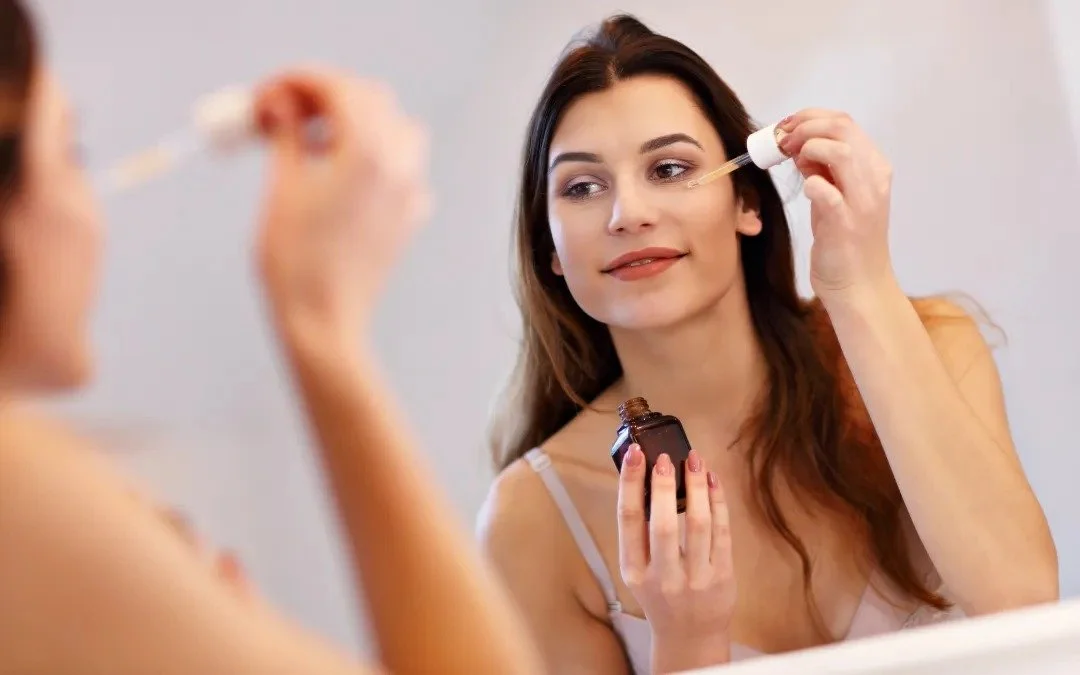Use the Best Hyperpigmentation Serum to Get Rid of Hyperpigmentation Fast
Frustrated with hyperpigmentation that won’t go away? Rest assured – it is treatable! It’s simply a matter of developing a skin care regimen that works best for you and using the best possible combination of specially formulated products. In this article, we’ll take a close look at the causes of hyperpigmentation, as well as reviews of the best hyperpigmentation serums to help combat this pesky skin condition.
So, if you’re struggling with uneven skin pigmentation, you’re exactly where you need to be! You’ll find a solution to your problem and answers to your questions right here, in one easy guide
What is Hyperpigmentation?
Hyperpigmentation is a fairly common skin condition referring to dark patches of skin that stand out from the lighter, normal surrounding skin tone. It occurs when the skin produces too much melanin, which is a type of protein responsible for giving your skin its natural color. This uneven skin pigmentation can take many forms, including age or “liver” spots, sun spots, or dark spots left over from acne scars. Although hyperpigmentation can happen to anyone, it occurs most commonly in individuals with medium to dark complexions.
What Causes Hyperpigmentation?
In this section, I’ll walk you through the different kinds of hyperpigmentation and their three main causes. Getting to the root cause of your uneven skin tone can help you treat it more effectively and – better yet – prevent it from coming back.
1. Age or “Liver” Spots
These pesky dark spots usually occur on the face and hands, and they’re a direct result of sun damage. The medical term for these is solar lentigines.
Tips: To prevent age spots from sun damage, use a professional hyperpigmentation serum. You’ll also benefit from wearing wide-brimmed hats, avoiding tanning beds, and staying in the shade when the sun is at its peak.
2. Post-Inflammatory Hyperpigmentation (PIH)
These types of discoloration are the residual marks leftover from severe acne pimples, even after the acne itself has healed. They occur because skin often overproduces melanin when it’s recovering from particularly bad inflammation.
While PIH does fade over time, it can take up to two years for each spot to return to its original color! That’s why using the right hyperpigmentation serum and other skin care products are essential for timely healing.
Tips: It’s definitely tempting to pop pimples, especially when they are large and bright red! However, this increases inflammation, which increases your risk of developing PIH. Instead, use purifying cleansers and acne serums to reduce inflammation. Specially formulated Epidermal Conditioning Cream or Manuka Infused Lipid Cream also soothe rough, inflamed, acne-damaged skin.
3. Melasma
Melasma, which is also called chloasma, produces larger areas of darkened skin. It appears most prominently on the forehead, cheeks, and the bridge of the nose. Typically, hormonal changes and excessive sun exposure cause melasma. Although this skin condition affects both men and women, it is more common in women, especially during pregnancy or when they’re using oral contraceptives. Facial melasma is also more common in women of African descent.
Tips: Try using a serum with tyrosinase inhibitors. Tyrosinase helps regulate melanin production to prevent dark spots from forming. Any skincare products that increases cell turnover rate will help get rid of hyperpigmentation, such as Spalina’s Mineral C + DNA Repair Serum.
It has also been scientifically proven that LED light therapy treatments can work wonders for melasma.
LED Light Treatment
If pregnancy is the cause of your melasma, it may subside after you give birth. Talk to your doctor and consult a licesed esthetician to establish an effective regimen to treat melasma both during and after pregnancy. If you suspect your oral contraceptives are causing the melasma, talk to your doctor about changing your birth control pill to one that is lower in estrogen.
The Best Hyperpigmentation Serum
Since excess melanin production is the cause of hyperpigmentation, you should opt for serums that inhibit melanin production and encourage the growth of new cells. Both the Mineral C + DNA Repair Serum and the Antioxidant Line Diffusing Serum contains ingredients that regulate melanin and accelerate the growth of new, healthy cells.
Incorporating both of these hyperpigmentation serums into your regimen will promote much clearer, fresher skin!
Nightly Hyperpigmentation Serum:
Spalina’s Antioxidant Line Diffusing Serum
Spalina’s Antioxidant Line Diffusing Serum is rich in antioxidants and has deeply moisturizing properties, so it heals your skin from the inside out. This anti-inflammatory is full of A and B Vitamins, which promote an even skin tone and encourage cell turnover for younger-looking skin.
Let’s take a closer look at what’s inside this superpowered hyperpigmentation serum:
Retinal is a gentle form of Vitamin A that promotes good cell membrane health, permitting nutrients to flow in and encouraging cellular waste to flow out.
Niacinamide (Vitamin B3) has anti-inflammatory properties, so it’s excellent for treating acne. Since it supports cellular respiration, it helps repair sun-damaged skin. As discussed above, both acne and sun damage plays a key role in hyperpigmentation!
Carnitine promotes healthy cell turnover.
SymWhite™ contains high levels of skin-lightening tyrosinase inhibitors.
Daily Hyperpigmentation Serum:
Spalina’s Mineral C + DNA Repair Serum
Utilizing innovative Zinc Finger Technology, this daytime hyperpigmentation serum accelerates cellular growth, so that the hyperpigmented cells can slough off and make way for fresh, new cells. This results in lightening dark spots and patches.
Vitamin C is a powerful antioxidant that helps smooth over fine lines and wrinkles.
Amino Acids encourage elastin and collagen production, and they are also therapeutic for skin that has been damaged by free radicals.
Zinc Oxide helps balance out oily skin while providing gentle hydration at the same time.
Honey hydrates thirsty skin, reduces your risk of acne breakouts, and it may diminish the appearance of fine lines and wrinkles.
Copper Peptides accelerate collagen and elastin production, which leads to firmer, more youthful skin.
Vitamin E helps fade scars and nourishes dry or damaged skin.
Aloe Vera soothes dry or inflamed skin, encouraging cell regeneration.
The Antioxidant Line Diffusing Serum works best in conjunction with Spalina’s Lipid Refresh Hydrating Toner.
Final Thoughts:
Getting the Most Out Of Your New Hyperpigmentation Serum
Once you’ve invested in a high-quality hyperpigmentation serum, you’ve taken an important step on the pathway to healing. The following are a few tips for the most successful outcome possible:
Make sure to be consistent with treatment, and use these serums as directed. The Mineral C + DNA Repair Serum should be applied twice daily. You should approach the nighttime hyperpigmentation serum a little differently: at first, start the Spalina’s Antioxidant Line Diffusing Serum therapy every other day. As your skin adjusts, gradually build up to applying once daily.
Use a face wash for hyperpigmentation prior to application. This prevents acne breakouts, and it also brightens and exfoliates pigmented skin.
Take preventive measures. For example, stay out of the sun or use products with SPF protection, if you suffer from dark spots as a result of sun damage. On the other hand, if post-inflammatory hyperpigmentation is the source of your problems, follow an acne-fighting skin care routine with facial cleansers and hyperpigmentation face masks.
Although it can be discouraging to get rid of hyperpigmentation, there is plenty of hope! All it takes is creating a diligent skincare regimen, investing in the correct hyperpigmentation serums for you, and staying faithful to your skincare routine.
You’ve got this!
Prevention is key. Wearing wide-brimmed hats to shield your face from sun damage is one way to prevent hyperpigmenation!



